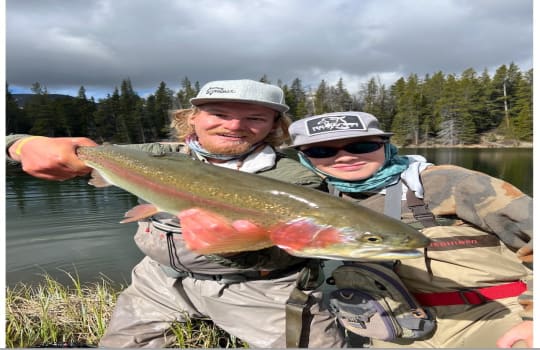
You have all the gear: new waders, boots, the newest fly rod and reel, vest with all the bells and whistles and a fly box stuffed with flies. You even have that nail knot tool that nobody knows how to use and YOU know how to use it. You get to the river and there’s not another soul in sight. This is going to be a great day. You get all geared up, get rod and reel put together and then go down to the river waiting to see what hatch is going on before you put on your fly. But, there’s a problem. NO HATCH! What now?
This is a very common problem with many fly fishermen. They rely only on what they can see flying around in the air to determine which fly to use. If they don’t see anything they might put on a hopper, beetle or some other big, bushy “searching” dry fly to try and entice a strike. If they’re a little more in tune to this scenario they will start with a nymph rig and get ‘em subsurface. The problem is, most people just guess at what flies to use in this case and may or may not get lucky and pick the right fly. They might use what worked last time they were on the river, except that may have been a week, a month or a year ago, maybe more.
If you’re in this situation you don’t want to guess, you want to be sure that the flies you use are imitating what the fish are eating. So, what’s the best way to figure out the puzzle? A seine net. A seine net is a fine mesh net that you put in the water to get a sample of the insects and other food that are available to the fish. Typically, this net is put over your landing net which can then be stuck down to the bottom of the river to get your sample. Once you have the seine in the river you can have another person upstream of you turning over rocks with their feet and shuffling around in order to break everything loose to be caught in the net.
OK, great. You have a sample of insects but you don’t know what they are. Not to worry, you don’t need to know what they are in order to identify which flies to use. You also don’t need to know the names of the flies in your box to be successful. Although knowing both the insects that you’re looking at and the names of the flies that match them is certainly helpful, it is not necessary. All you need to do is take an insect, worm, baitfish, etc. that you found in your seine and match the general profile, size and color to flies in your box. If there are several types of insects in your sample choose to match the one that is most abundant. If there is a lot of each type, use a multi-fly rig, up to 3 flies, to match your samples. That’s it.
I see far too many fishermen foregoing this crucial observation tool and instead using trial and error. It can take an entire morning before figuring out what the fish are feeding on by using trial and error, and then the fish switch to something else in the afternoon. Wouldn’t it just be easier to take 5 minutes first thing in the morning and be sure right away? Before you know it a 10 fish day will suddenly feel like a slow day of fishing.






